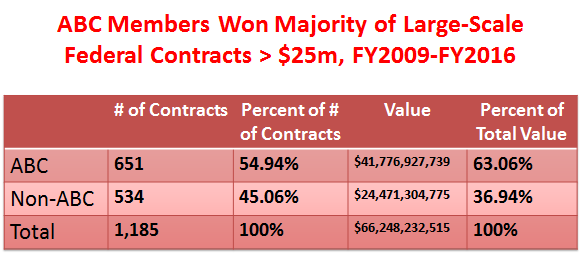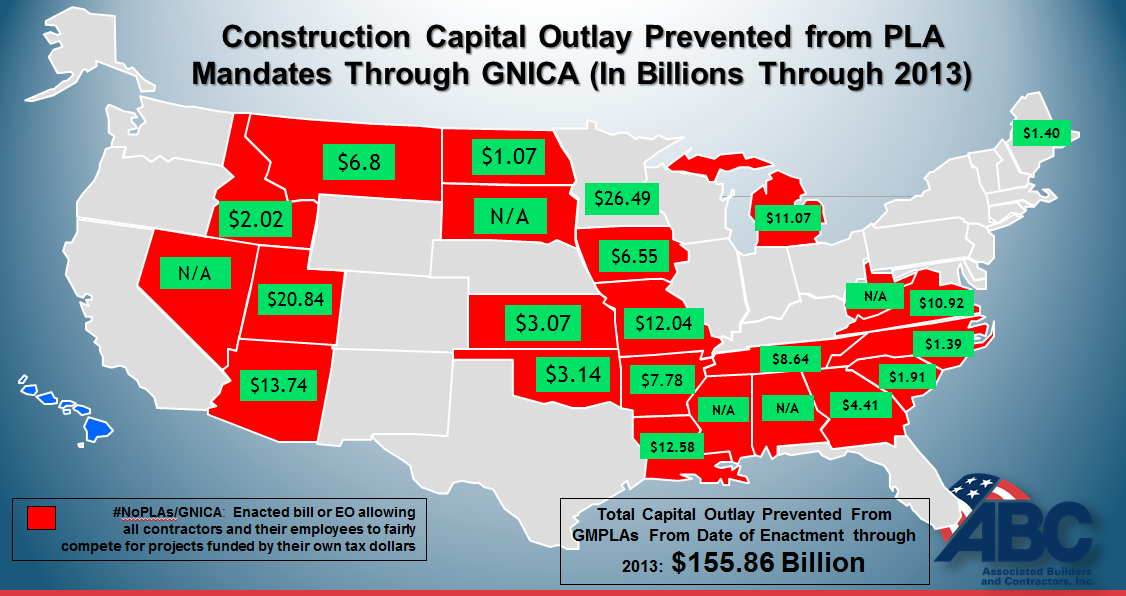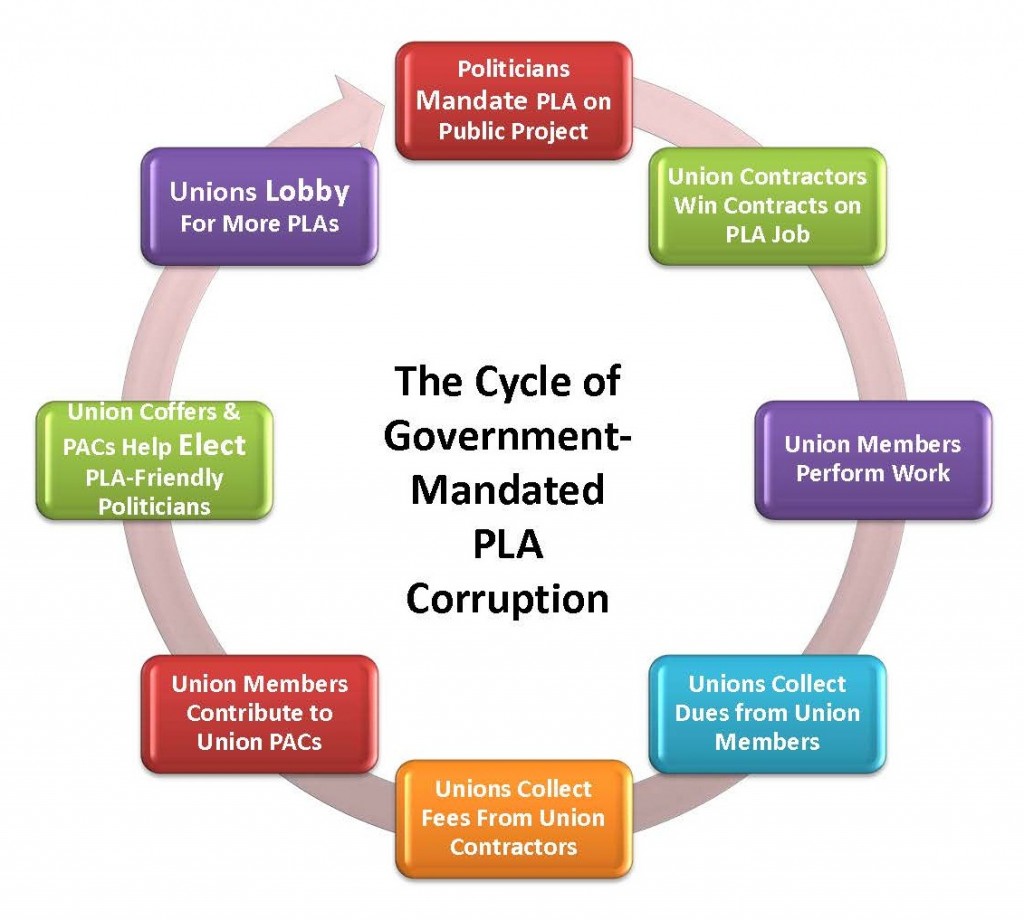Bureau of Labor Statistics: Construction Union Membership Increased Slightly
According to a Bureau of Labor Statistics (BLS) annual union membership report released Jan. 26, 2017, the 2016 union membership rate (i.e., the percent of wage and salary workers who were members of unions) increased slightly from 13.2 percent to 13.9 percent of the U.S. private construction workforce.
Construction unions added 99,000 members in a year-over-year comparison, and the construction industry workforce grew by 379,000 as the construction industry and overall economy improved.
Today, just 1.039 million out of 7.488 million U.S. construction industry workers belonged to a union in 2016, BLS reports.
During the nadir of the construction industry’s recession in 2010, just 801,000 construction industry workers (13.1 percent) belonged to a union, the lowest number of union members in recent history.
Updated state-specific union membership information for various industries, including the construction industry, is available at www.unionstats.com (see table II). (This excel file contains data from 2015 and this excel file contains data from 2014).
Union Membership Increases Slightly in Improving Construction Economy
The BLS report indicates the construction industry gained 379,000 jobs in a year-over-year comparison (7,109,000 in 2015 vs. 7,488,000 in 2016). The most recent BLS data pegs the construction industry unemployment rate at 7.4 percent, which is relatively unchanged from the 7.5 percent unemployment rate in a year-over-year comparison (and certainly better than the decade-high unemployment rate of 27.1 percent in February 2010).
Construction unemployment rates improved in 38 states in a year over year comparison, according to a January report issued by the Associated Builders and Contractors, which releases monthly state-by-state construction economics data here.
The Impact of Union Membership Data on Federal PLA Policies
The construction industry’s rate of unionization impacts the public policy debate surrounding government-mandated project labor agreements (PLAs) and President Obama’s pro-PLA Executive Order 13502. During the Obama era, some members of Congress and Obama administration officials beholden to Big Labor’s costly special interest agenda attempted to use PLA mandates and preferences on federal and federally assisted contracts to prop up construction union membership numbers by steering federal construction contracts to unionized firms and create jobs for union members.
On April 13, 2010, the Federal Acquisition Regulatory (FAR) Council issued a final rule, effective May 13, 2010, implementing President Obama’s Feb. 6, 2009, pro-PLA Executive Order 13502 into federal procurement regulations. It encourages federal agencies, on a project-by-project basis, to mandate PLAs on federal construction projects exceeding $25 million in total value.
The order also permits (but does not require) private, local and state recipients of federal assistance to mandate PLAs—a practice prohibited from 2001 to 2009 by President George W. Bush’s Executive Orders 13202 and 13208.
The negative impact of President Obama’s union-friendly policy on the merit shop contracting community has been muted by effective legal, legislative and public relations campaigns executed by ABC and a coalition of industry groups opposed to government-mandated PLAs.
This campaign helped prevent PLA mandates and preferences on nearly 99 percent of federal contracts exceeding $25 million from FY2009-FY2016, freeing up 1,173 contracts worth a total of almost $65 billion from PLA requirements so all qualified firms could fairly compete to win these contracts.
From FY2009-FY2016, ABC member prime contractors won 54.94 percent of large-scale federal contracts subject to President Obama’s pro-PLA Executive Order 13502. That’s 651 contracts valued at a total of $41.776 billion (63 percent of all contract value) won by ABC members.

Despite this success, billions of dollars’ worth of federal and federally assisted construction projects were subjected to government-mandated PLAs.
In early 2017, a coalition of construction and industry stakeholders and ABC asked then-President-elect Trump to rescind the Obama pro-PLA policy and replace it with the court-tested and proven Executive Orders 13202 and 13208.
Mr. Trump has not publicly indicated his support or opposition to government-mandated PLAs. He has declined to voluntarily build with PLAs on Trump development projects in open shop markets, but he has occasionally executed voluntary PLAs with unions on some projects in union-friendly markets in New Jersey, Manhattan and Chicago, with mixed results.
For example, in June 2006, the company developing the $850-million Trump International Hotel and Tower in downtown Chicago sued three labor organizations for breaching the terms of a PLA after union members walked off the project during a strike (401 North Wabash Venture LLC v. Chicago and Cook County Building and Construction Trades Council, N.D. Ill., No. 06-CV-3077, 6/5/06).
The development company eventually settled the suit against the Chicago and Cook County Building and Construction Trades Council, the Construction and General Laborers’ District Council of Chicago, and Vicinity and Laborers’ International Union Local 6.
Joseph Gagliardo, managing partner of the firm Laner, Muchin, Dombrow, Becker, Levin and Tominberg Ltd., represented 401 North Wabash in the action and told the media that the unfortunate lesson emerging from this strike and suit has to do with the real value of project agreements with Chicago unions.
“The whole purpose of the project labor agreement is to prevent interruption and prevent delay and have labor peace,” he said. “So the question this strike raises—and I don’t know the answer to it—is what impact will this strike have on the willingness of other building owners to engage in a project labor agreement?”
Trump’s personal experience of broken promises on a PLA project in the private sector is not unique. TheTruthAboutPLAs.com has documented numerous problems on contracts subjected to government-mandated PLAs, including failures on federal contracts that resulted in increased costs, delays and poor local hiring outcomes.
Taxpayers and the merit shop contracting community deserve relief from anti-competitive and costly policies promoting government-mandated PLAs. Fair and open competition is the only way to give taxpayers the best possible product at the best possible price.
President Trump should follow the lead of states. Since President Obama issued Executive Order 13502 in 2009, 20 states have responded to the threat of discriminatory PLA mandates and preferences by adopting legislation or executive orders banning government-mandated PLAs on state, local and publicly funded projects, bringing the total number of states to enact such measures to 22. All legal challenges to state and federal policies ensuring government neutrality in contracting have failed. ABC’s efforts to enact state Government Neutrality in Contracting Act (GNICA) laws prevented government-mandated PLAs on $155.86 billion of state construction work through 2013, and an estimated $170 billion through May of 2016.

In 2015, West Virginia and Arkansas enacted bipartisan laws prohibiting state government entities from requiring contractors to sign a PLA or other agreements with labor unions as a condition of performing work on public construction projects, and additional states are poised to pass GNICA legislation in 2017.
Dozens of communities across the country also have enacted similar GNICA laws for public works contracting.
In 2017, ABC will continue to fight for federal, state and local policies that create a level playing field in the procurement of government construction contracts, increase competition, help small businesses grow, curb construction costs and spread the job-creating benefits of federally funded contracts throughout the entire construction industry.
Learn more about government-mandated PLAs with this video:
It’s time to end the cycle of government-mandated PLA corruption:
PLA Mandates on Taxpayer Funded Contracts Is Bad Public Policy
There are valid economic and ethical reasons why promoting the special interests of Big Labor—which now composes just 13.9 percent of the U.S. private construction workforce—through PLAs is bad public policy.
For example, on projects already subject to government-determined prevailing wage rates, research has found PLAs on average increase the cost of construction between 12 percent and 18 percent compared to similar non-PLA mandated projects.
With the added cost premium of anti-competitive PLAs, there is less construction money available. Because less construction money means fewer total construction projects and construction jobs, union-favoring PLAs could make unemployment in the construction industry even worse.
In addition, there is no compelling reason to create jobs for union members ahead of qualified nonunion employees via government-mandated PLAs. No credible evidence suggests union members or unionized firms are more efficient, cheaper, safer or produce better quality results. Qualified nonunion employees and contractors deserve just as fair a shot to feed their families as union members.
Unions should use the ultra-competitive market and tough economy as an opportunity to retool their product and make it more lean and efficient to compete in today’s marketplace instead of relying on government handouts to stay relevant.
The decision to agree to a PLA should be left up to individual contractors rather than being imposed by government agencies as a condition of winning a government construction contract.
Government-mandated PLAs reduce competition, increase costs and discriminate against the 86.1 percent of the U.S. construction workforce that does not belong to a union.
The U.S. economy and the construction industry would benefit from free and open competition, without union-favoring government-mandated PLAs, where taxpayers can get the best possible construction product at the best possible price.














3 Responses to Bureau of Labor Statistics: Construction Union Membership Increased Slightly
[…] labor, this E.O. severely limited the number of firms that can accept a federal contract, since only 13.9 percent of the construction workforce is unionized. Additionally, many researchers have found that this […]
[…] labor, this E.O. severely limited the number of firms that can accept a federal contract, since only 13.9 percent of the construction workforce is unionized. Additionally, many researchers have found that this […]
[…] labor, this E.O. severely limits the number of firms that can accept a federal contract, since only 13.9 percent of the construction workforce is unionized. Additionally, many researchers have found that this […]